Mercury lamps have been developed and used very well, so er have traditionally regarded mercury lamps as standard light sources. However, the development of ultraviolet LED has just started, and the future development space is still huge. In addition, the Ultraviolet LED Lights industry chain is very long, from the growth of crystals, chip cutting, to chip packaging, to the integration of UV Light Source Modules, but also involves the control of power supply and the design of cooling system, etc., each step on the final product - UV LED Light quality has a very important impact. Therefore, it is very important for the research and development of UV LED system to understand the ability boundary of UV LED and expand the ability boundary of UV LED.
A.Difference between Hight Power UV LED Light Source and Mercury Lamp (advantages and disadvantages, public misunderstanding of UV LED)
If we want to replace the traditional mercury lamp with UV LED, we must first know the difference between mercury lamp and UV LED Light, what are their advantages and disadvantages and so on. UV coatings can cure, because the formulation of the light initiator absorption of a certain wavelength of ultraviolet light and produce free radicals (or cations, anions) and then initiate monomer polymerization.
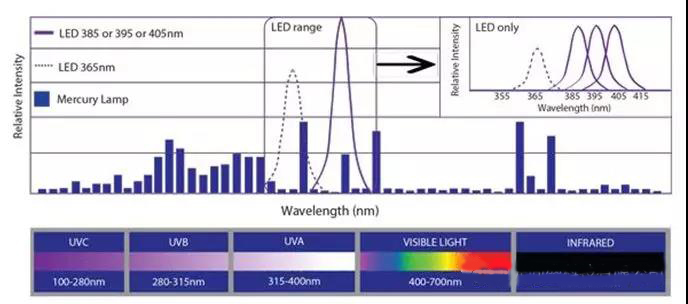
The emission spectrum of mercury lamp is continuous, from ultraviolet to infrared, especially in the UVB to short wave UVA, the intensity is concentrated, while the emission spectrum of UV LED is narrow. The common peak is 365nm and 395nm (including 385, 395, 406nm) these two bands.
The main industrial application is UVA band near ultraviolet light. In the wavelength range of 365nm and 395nm UV LED light sources, the molar extinction coefficient of most initiators is relatively low. Therefore, High Power UV Light Emitting Diode for UV Curing generally causes low initiation efficiency and serious problems of oxygen resistance polymerization, which is not conducive to surface drying.
Note : at present, many Ultraviolet LED Lights for UV Flashlight manufacturers or LED UV coating manufacturers claim that LED UV is good at grinding. Strictly speaking, it is the result of poor surface curing. What is difficult is not good at grinding, but how to achieve adjustable grinding, which is both wear-resistant and good at grinding. There are even some manufacturers hanging sheep head shell dog meat. In the back of the UV LED Lamp added a mercury lamp, the real effect is still mercury lamp.
However, we can also see that the light intensity of Soldering Ultraviolet LED Lights for UV Coating is much stronger than that of mercury lamp at 395nm and 395nm, which is conducive to the deep curing of UV material. Many conventional UV curable device use a gallium lamp behind a mercury lamp (415nm main emission wavelength) to enhance deep curing.
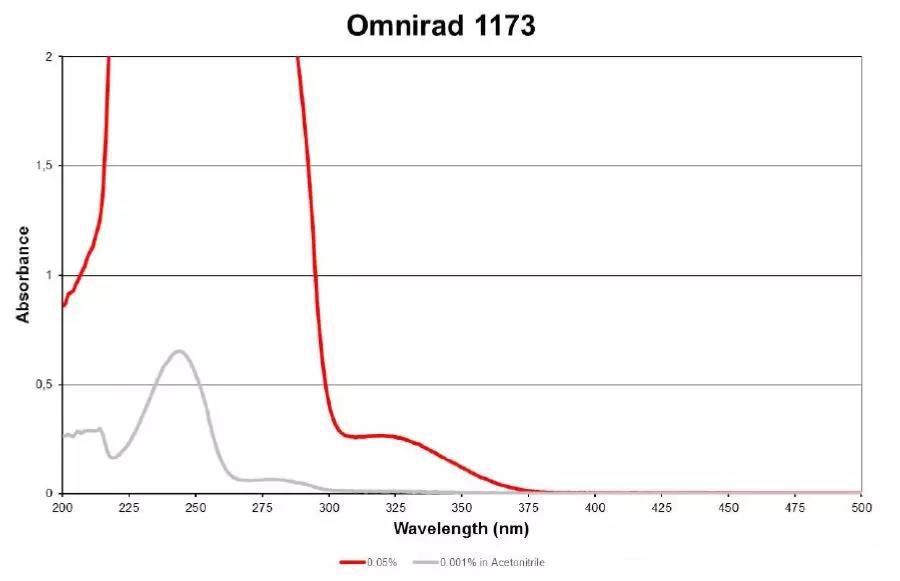
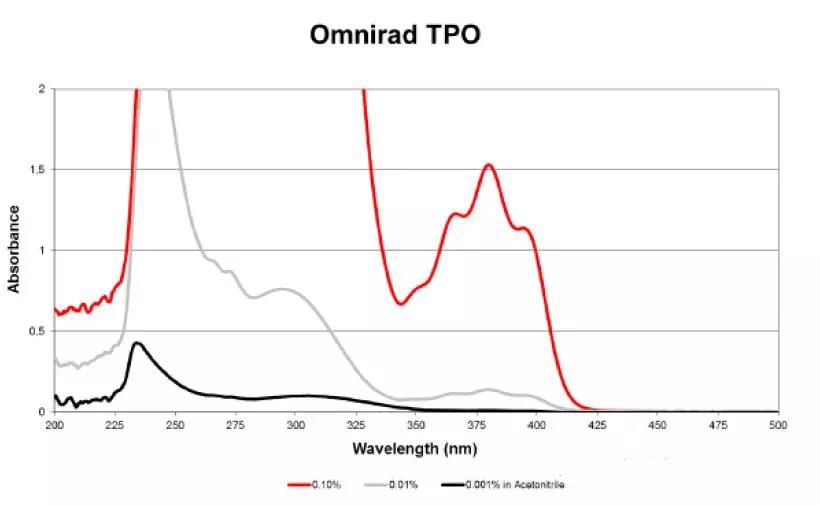
The second issue we want to talk about is the energy saving of LED. Generally speaking, everyone thinks that High Power Ultraviolet LED for UV Flashlight is more energy saving that mercury lamp. Even many manufacturers have put out forward the propaganda slogan that UV LED can reduce the energy consumption by 70%. in fact, there is a big misunderstanding, there are two reasons : first, some enterprises sensationalism, exaggerated propaganda; second, many people do not understand UV LED at all, confusing the two concepts.
This is generally based on the fact that mercury lamps emit only 30% ultraviolet light, whereas UV LED emits all ultraviolet light. What really affects the energy consumption of the system is the photo-electric conversion efficiency and effective light efficiency. The photo-electric conversion efficiency of mercury lamp is very high, but most of the light emitted by mercury lamp is visible light and infrared light, and UV material curing requires only 30% ultraviolet light.
UV Light Emitting Diode for UV Printing, on the other hand, is much less efficient, at about 30%. It’s almost as efficient as a mercury lamp. According to the principle of conservation of energy, the remaining 70% of electricity is converted into heat. The only difference is that the heat of the UV LED is diffused from the back of the lamp through the lamp panel, and there is no heat in the shiny surface, hence the name “cold light source” of UV LED. Mercury vapor comes from the front through the reflector and infrared. This is why UV LED Light Sources generally need air cooling to dissipate heat. High power UV LED light sources also need to be equipped with a water to dissipate heat according to 70% of the electrical power of the light source.
What can really achieve energy saving is that Ultraviolet LED for UV Curing can be used right away, can achieve accurate irradiation through optical design, improve the characteristics of effective light efficiency, and these need the cooperation of infrared detection, intelligent control and so on, for most of the UV LED equipment manufacturers in the market, there is not enough strength to carry out this aspect of research and development.
The third and most important point is environmental protection. The environmental pollution of mercury lamp mainly has two points :
1.The emission spectrum of mercury lamp has the far ultraviolet light below 200nm, will produce a lot of ozone (many workshop workers reported that mercury lamp will feel smelly, this is the root cause).
2.The life of mercury lamps is relatively short, only 800-1000 hours. The secondary pollution (mercury pollution) caused by abandoned mercury lamps has always been a difficult problem to solve.
It is reported that two three gorges hydro-power stations are needed to dispose of mercury waste every year, and worse, there is no good way to completely dispose of mercury waste. UV LEDs has no such problem. Since the minamata convention on mercury came into force in China on August 16, 2017, de-mercury has been on the agenda.
Although it is noted in the convention that mercury fluorescent lamps for industrial production for which there is currently no alternative are not included in the list of restrictions, it is also noted that parties may request that the relevant products be added to the list of restrictions if alternatives are available. Therefore, the UV curable mercury lamp products when the comprehensive elimination depends on the development of UV LED in the field of UV curable.
Other advantages of LED include : LED is narrow wavelength, which can achieve precise curing (on the one hand, precise local curing can be achieved, such as 3D printing. On the other hand, different initiators can be selected to better achieve different degrees of curing). UV LED Light Source is lamp bead structure, can be adjusted according to the need of length, width, irradiation angle, etc., make it spot light source, line light source, surface light source, to meet the requirements of different irradiation process.
Compared UV LED with traditional mercury lamp :
|
Items |
UVLED |
Mercury lamp |
|
Spectrum |
Narrow |
Wide |
|
Dimming range |
0-100% |
20-100% |
|
Effective light efficiency |
High |
Low |
|
Life |
Long >20000h |
Short 800-1000h |
|
Rev. Stop Speed |
Out-of-the-box |
Need to preheat |
|
Shape of lamp |
Adjustable (spot, line, surface) |
Non-adjustable |
|
Size of device |
Portability |
Unwieldy |
|
Cavity temperature |
Low |
High |
|
Energy consumption |
Low |
High |
|
Ozone |
None |
Yes |
|
Secondary pollution (mercury waste) |
None |
Yes |
B.Achieve UV Curing Light Source for UV Material Parameters
Wavelength of 365nm, 395nm radiation intensity of illumination (light intensity, light power density) : mw/cm ^ 2 total power: mj/cm ^ 2.
In the process of curing light, cannot leave the above three main parameters : wavelength, intensity and total power, wavelength determines whether light initiator can be inspired, light intensity determines the efficiency of ultraviolet light trigger, directly affect the table dry (oxidation polymerization) and deep curing effect, while the total power determines whether can let cure completely.
The biggest advantage of LED compared with mercury lamp is that the LED is formulated and adjustable. Within the capacity of LED itself, it can adjust the formulate to the greatest extent according to the requirements of curing. In the UV LED curing equipment, it is to constantly expand their ability to find the balance point. On the LED alone, is based on the paint formula, to find the best cure required LED light source parameters.
C.The emitting principle of UV LED and the development status of UV LED chip
According to the principle of electron transition, the electrons of an atom return from the excited state to the ground state, releasing energy at different wavelengths of radiation (emitting electromagnetic waves of different wavelength).
So the first way to make something that emits ultraviolet light is to look for an atom that has an electron excitation state that’s just below the ground state in the ultraviolet range, and our conventional mercury lamp is the most widely used UV source.
The second method is to use semiconductor light-emitting principle (in simple terms is to light-emitting semiconductor and forward voltage, from P area into N the holes and by N area into P area electronic, near the PN junction several micrometers, respectively, and the hole recombination of electrons and PN area, produce the spontaneous radiation fluorescent) to make the UV band of light source.
It is well known that the band gap of three to five semiconductor materials in the aln to gallium nitride or indium gallium nitride (InGaN) series falls between the blue and ultraviolet wavelengths.
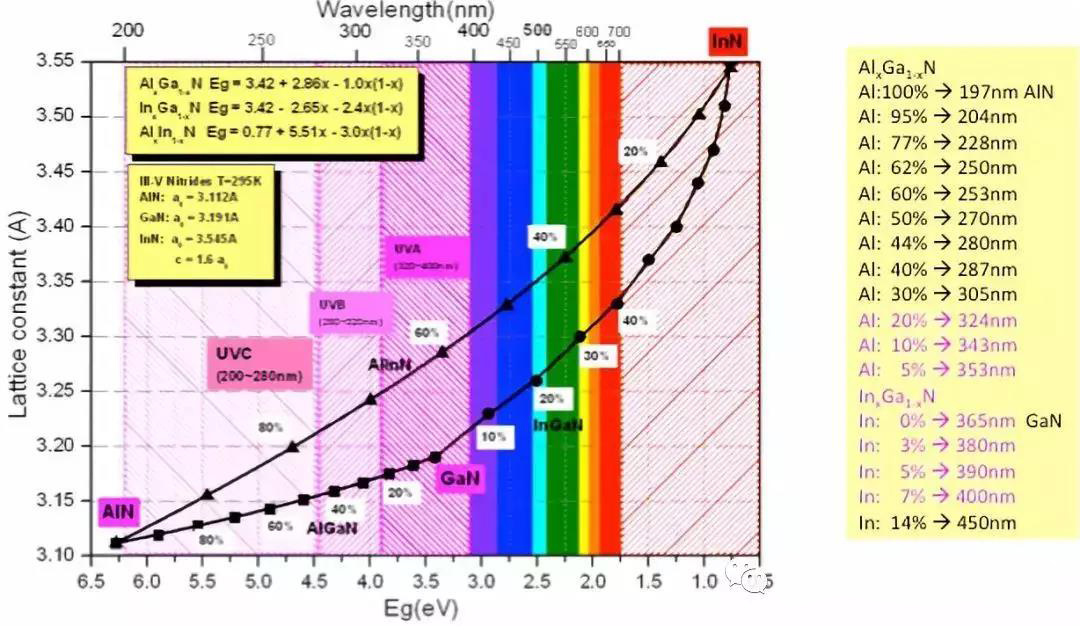
In theory, though, any wavelength of light can be achieved by the ratio of luminous materials. Limited by various conditions, the types of UV LED chips that can be commercially produced are still very limited at present, and the high-power chips that can be commercially applied are basically concentrated in the UVA band of 365nm - 415nm. In the past two years, UVB and UVC have also shown a booming trend, but they are basically limited to the civil consumer market of disinfection, sterilization and other low-power applications.
There are several reasons for this :
1.The structure of crystal material determines the luminous efficiency (photo-electric conversion efficiency). As the 365 - 405nm in UVA can also use gallium nitride (GaN) and high luminous indium gallium nitrogen (InGaN). The UVB and UVC structures are based on low emitting AlGaN materials, rather than the currently familiar gallium nitride and indium gallium nitride, which absorb ultraviolet light below 365nm. As a result, the luminous efficiency of UVB and UVC is extremely low. Taking LG 278nm chip as an example, the efficiency of the whole photo-electric conversion is only 2%.
2.According to the principle of energy conservation, 2% photo-electronic conversion efficiency means that 98% of electricity is converted into heat, and the service life and luminous efficiency of LED chips are inversely proportional to the temperature. Such a high heat output requires a high requirement for heat dissipation. According to the existing heat dissipation method, it is impossible to achieve the effective heat dissipation of high power UVB and UVC chips.
3.In order to protect the LED chip, the chip must be encapsulated, LED light is omnidirectional, need to add lens to focus light. In addition to quartz glass, most materials have very low ultraviolet light transmittance. The shorter the wavelength, the lower the transmittance is. In this way, when the luminous efficiency is already low, a large part of the light will be absorbed by the lens.
4.Current UVB and UVC chips are also reaction furnace growth crystal based on UVA. In addition to the defects of the materials themselves, there are also problems such as mismatching of substrate and the thermal expansion coefficient of the crystals, resulting in extremely low yield of the crystals and high cost.
On the whole, as UBV and UVC have low luminous efficiency, high cost and higher requirements for system heat dissipation, it is difficult to achieve industrial high power UVB and UVC light sources before a more significant breakthrough in technology.
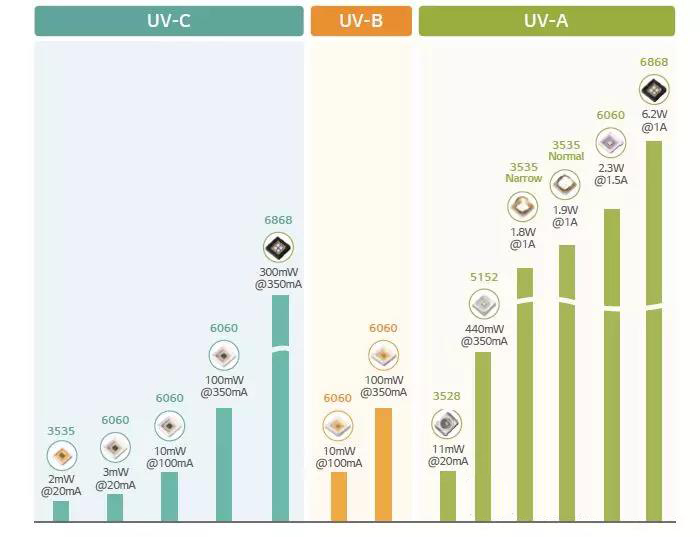
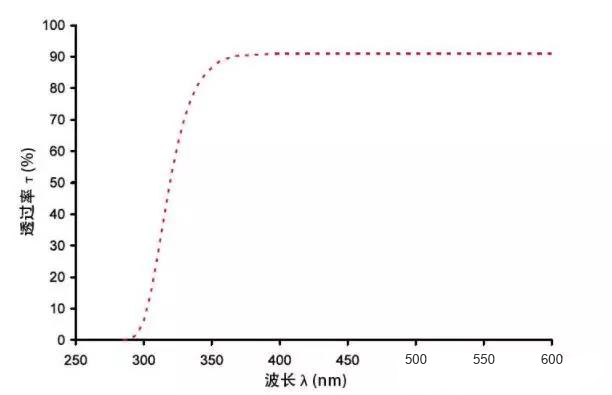
D.Research and development of UV Light Source System
LED chip is only an important part of LED light source, we do research and development of LED light source, need to carry out systematic research as a whole. In addition to the wavelength of LED, it also involves a series of packaging technology, optical design, cooling system, power supply system, intelligent control system and so on.
At present, there are four main packaging structures of LED chips, namely, formal structure, flip structure, vertical structure and three dimensional vertical structure. At present, ordinary LED chips adopt sapphire substrate formal structure, which is simple in structure and mature in manufacturing technology. However, due to the poor thermal conductivity of sapphire, the heat generated by the chip can hardly be transferred to the heat sink, which is limited in the application of high power UV Light Emitting Diode for UV Printing.
Flip chip packaging is one of the current development directions. Compared with formal structure, the heat does not need to pass through the sapphire substrate of the chip, but directly to the silicon or ceramic substrate with higher thermal conductivity, and then to the outside environment through the metal base. In addition, since the flip structure does not need external gold wire, the integrated density of the chip can be very high, improving the optical power per unit area. However, both the flip structure and the formal structure have the same defect, that is, the LED P and N electrodes are on the same side of the LED, and the current must flow through the n-GaN layer laterally, resulting in current congestion and high local calorific value, which limits the upper limit of driving current.
The blue light chip with vertical structure is produced on the basis of formal assembly. This kind of chip is to bond the chip with traditional sapphire substrate upside down on the silicon substrate or metal substrate with good thermal conductivity, and then peel the sapphire substrate by laser. The chip of this substrate solves the problem of heat dissipation bottleneck, but the process is complex, especially the substrate conversion process is difficult to achieve, and the yield is low. However, with the development of technology, UV LED vertical packaging has become more and more mature.
Now a new three-dimensional vertical structure is proposed. Compared with the vertical structure LED chip, the main advantage of the three-dimensional vertical structure LED chip is that no gold wire is needed, making the package thinner, better heat dissipation effect and easier to introduce a larger driving current. However, there are still many problems to be solved in application of 3D vertical structure.
Because UV LED luminous efficiency is generally lower than lighting LED’s, in order to achieve higher luminous efficiency, vertical structure packaging is generally selected.
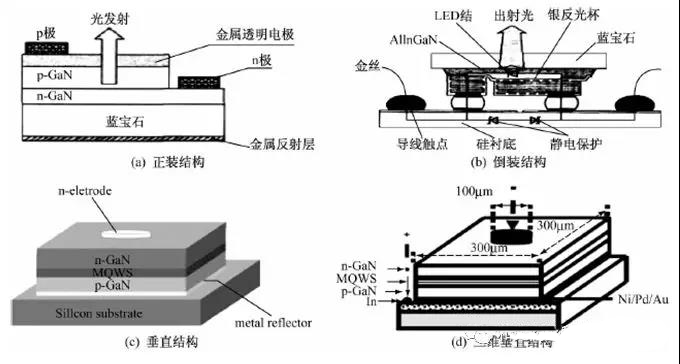
Since LED luminescence is omnidirectional, in the case of low luminescence efficiency, scientific and reasonable optical design, such as reflector cup, primary lens, secondary lens and so on, is also needed to achieve higher effective light efficiency (the light efficiency of positive illumination). In addition, due to ultraviolet light attenuation rate is higher in the medium, so in the lens material choice and multiple assessment (quartz glass, high borosilicate glass, toughened glass, etc.), try to choose the material with high UV transmittance (as well as to avoid material suction light under ultraviolet light for a long time and the temperature rises).
As previously stated, according to the principle of conservation of energy, when electrical energy is converted into light energy, a large part of it is also converted into heat energy (UVA band, electricity : light : heat = 10 : 3 : 7). The effective service life of LED chip is closely related to temperature saving. In the process of curing light, in order to provide higher optical power density, often need to put the High Power UV Chips for UV Curing integrated with high density, such cooling is put forward high request, how to realize the efficient heat dissipation, and ensure that all of the LED chip in the scope of reasonable and balanced section temperature, also requires scientific design, computer simulation and practical test.